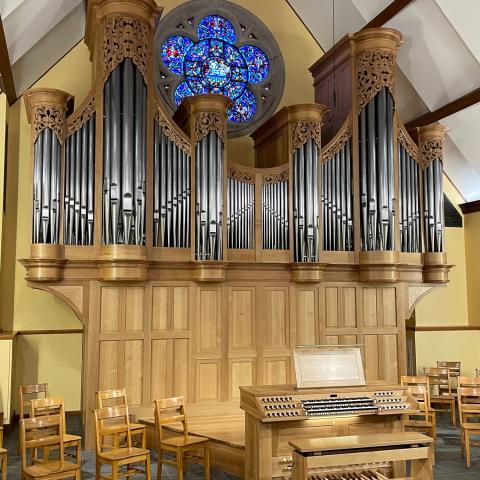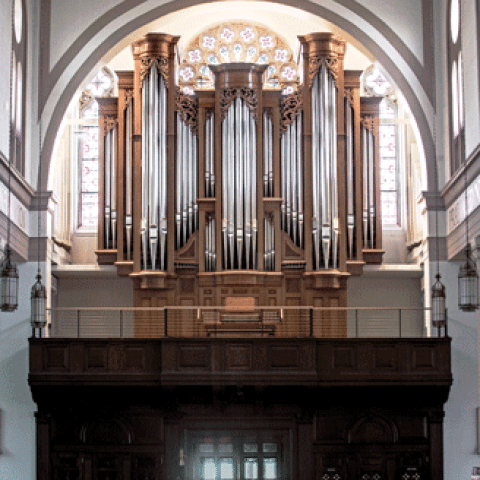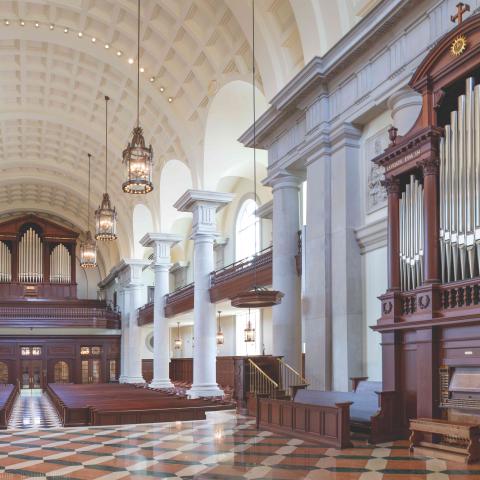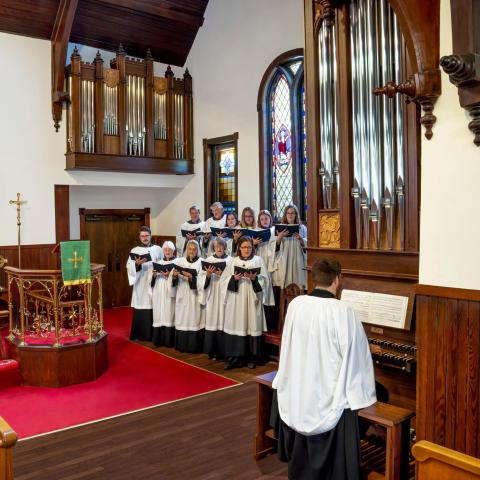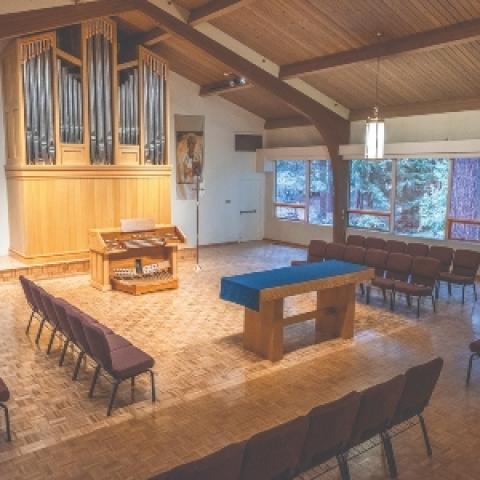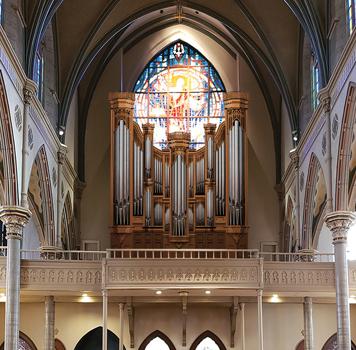
Noack Organ Company, Inc., Georgetown, Massachusetts, has been chosen to build a new three-manual, 58-stop, mechanical-action instrument for the Cathedral of Saint Paul, Birmingham, Alabama.
The cathedral was completed in 1893 to the designs of Chicago, Illinois, architect Adolphus Druiding, who successfully combined Neo-Gothic Victorian lines with eclectic detailing, leading to a sense of grandeur through the proportion of the sanctuary and its intricate decoration.
Noack Opus #164 will be housed on the west end gallery in a new solid oak case that will frame the exterior window. Delivery is expected in 2021. Fr. Bryan W. Jerabek, J.C.L., is cathedral rector; Bruce Ludwick, Jr., is director of music and organist; and Mark W. Hayes is assistant organist.
For information: www.noackorgan.com.

